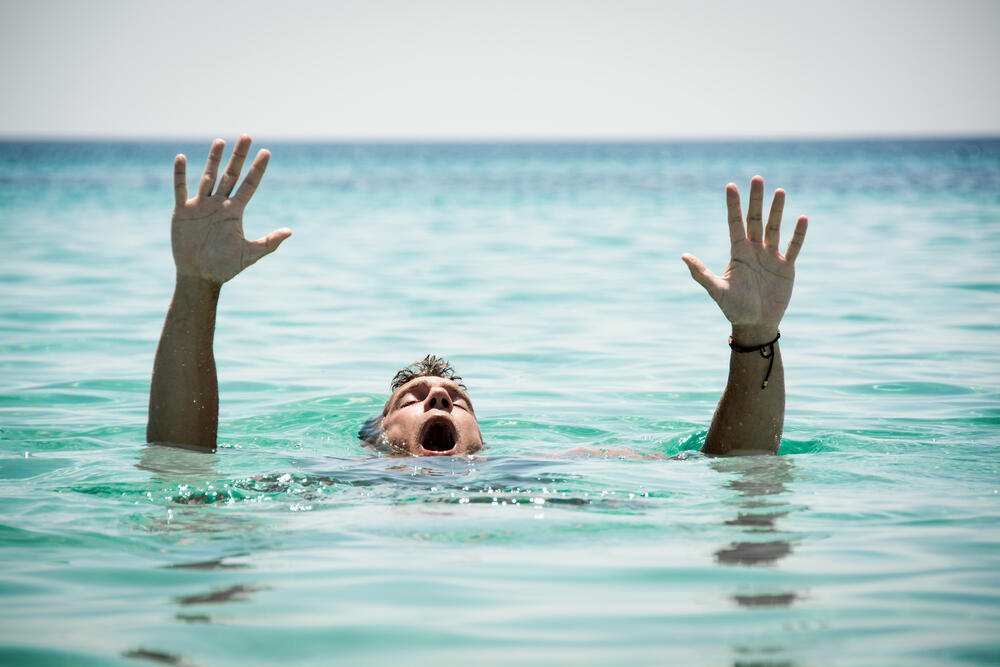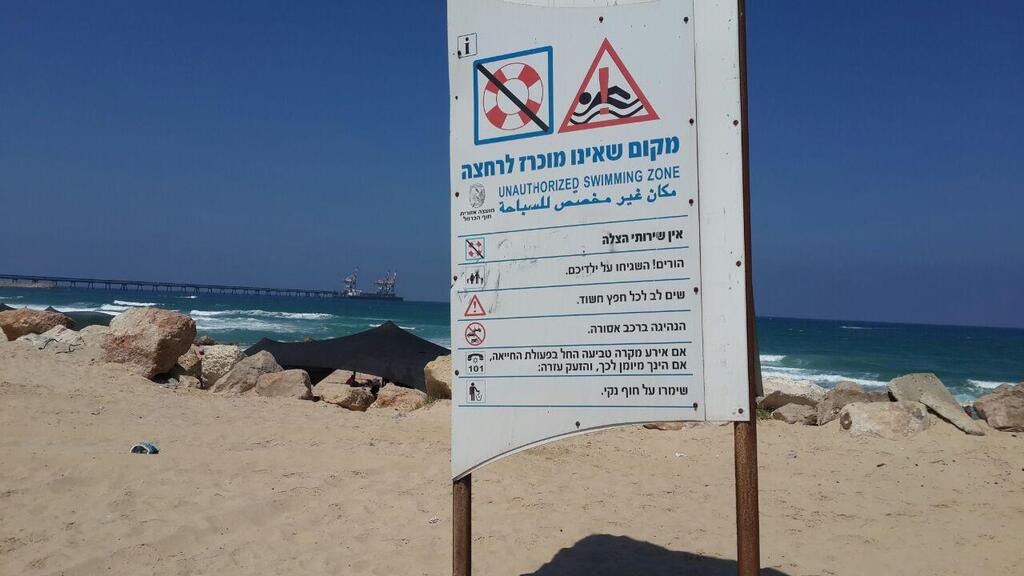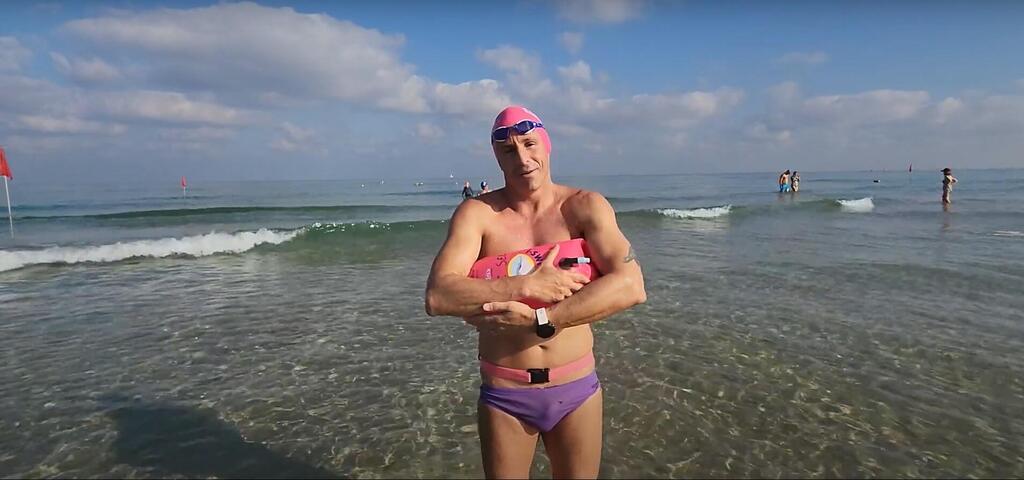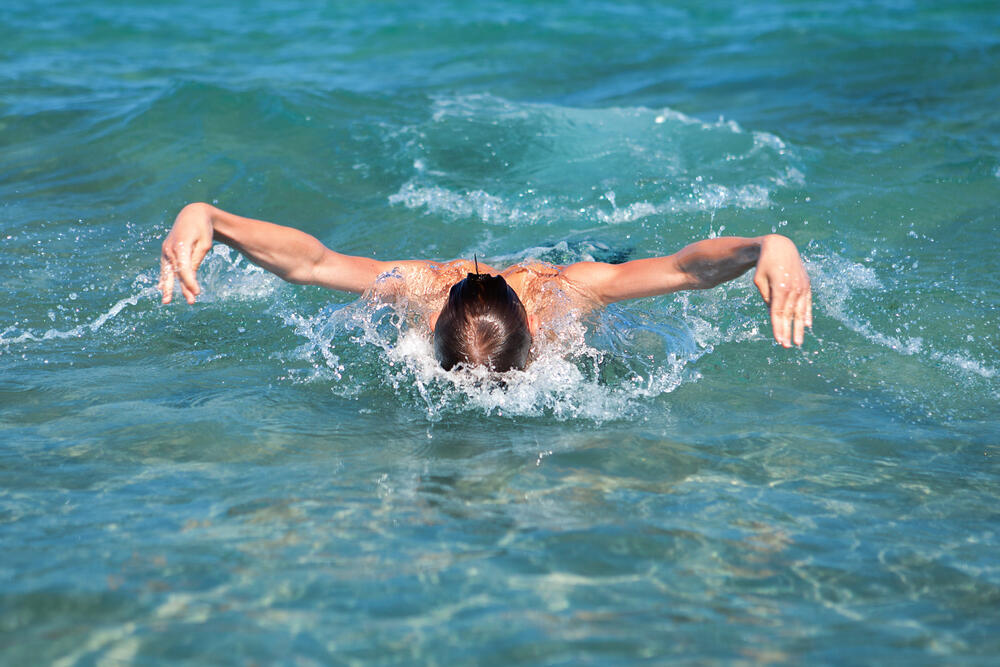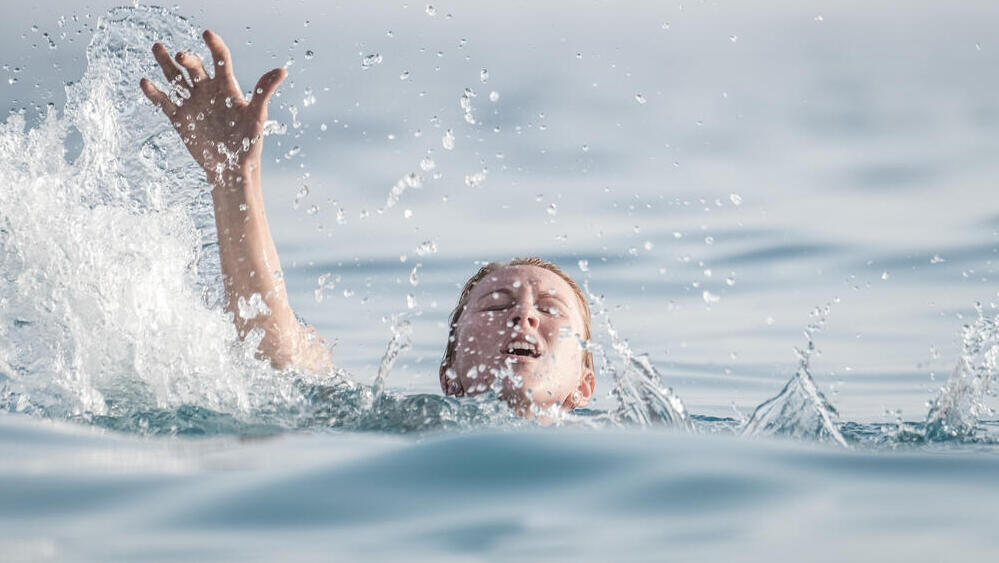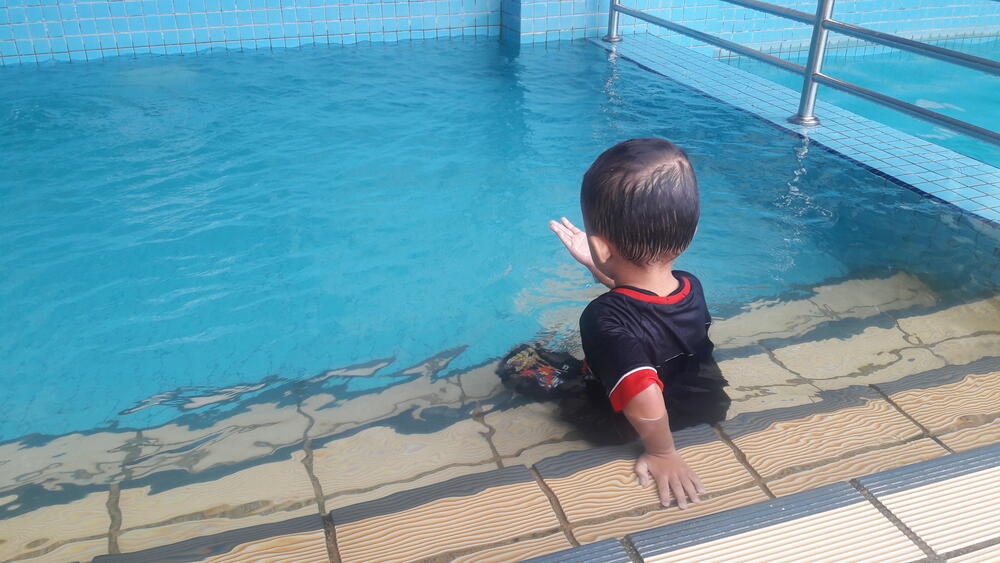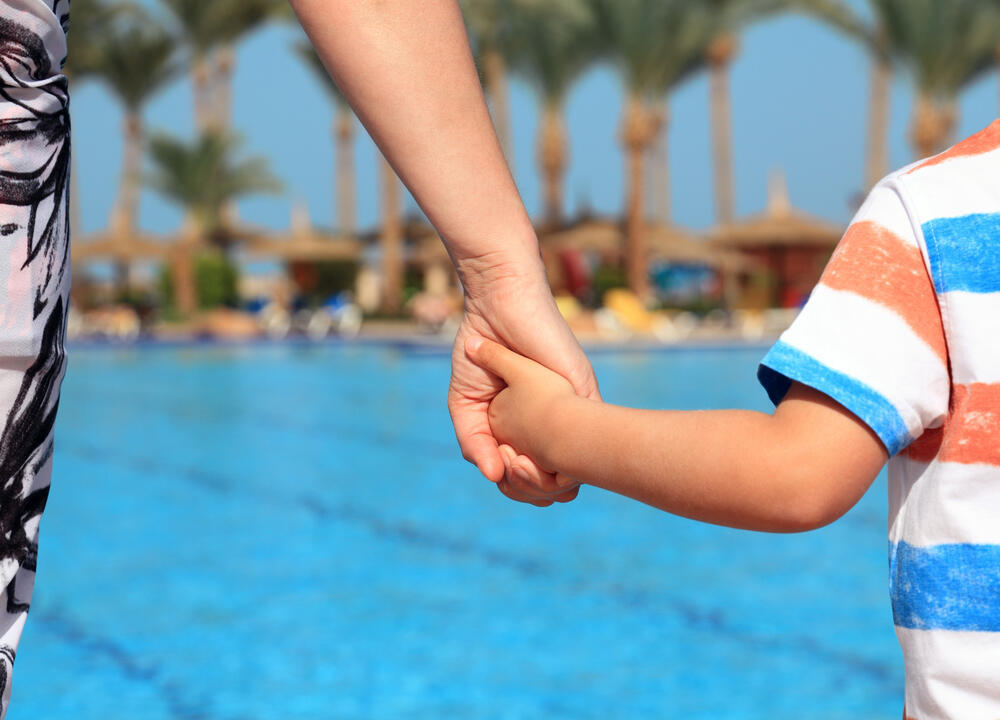Getting your Trinity Audio player ready...
The summer vacation is here, drowning has become a nearly daily occurrence as incidents are on the rise, some of which result in death. Drowning hazards are real and present. No one is immune. Sometimes, just a momentary lack of focus is enough to lead to a disaster.
More stories:
It is common knowledge that swimming in unsupervised beaches is a risk but in case Ynetnews readers find themselves in danger, here are some helpful tips that may save lives.
How can we make swimming in the sea, pools and other water bodies safer?
"We see a very high number of drownings this time of year," says Uri Sela, assistant coach for the Israeli national open waters swimming team.
"In the summer, waves aren’t high, and there are frequent changes in winds from different directions that flatten the waves. This makes the sea unpredictable, leading to riptides. It can be confusing.” He said.
“There are many cases where people enter seemingly calm waters, but then get swept away. Generally, midday hours are more problematic. It’s advisable to swim in the morning when the wind is weaker, and the sea is less turbulent," he added.
How can we identify dangerous areas?
"There are several methods, one of which is counting the time between two waves crashing. When the sea is calm, most of the time there is a six-second interval between waves. If you can't clearly count six seconds between wave sets, the sea isn’t safe to enter.”
“There are certain times when the sea pulls strongly, and you can feel it within the first second. If you’re carried 20 meters within 10 seconds, the sea is very dangerous.”
"Another method is to enter the shallowest area, about 30-40 centimeters deep, lie flat on your stomach with your hands and legs spread to the sides, and your head in the water. After 10 seconds, observe the direction in which you were carried,” he explains.
“There are certain times when the sea pulls strongly, and you can feel it within the first second. If you’re carried 20 meters within 10 seconds, the sea is very dangerous.”
"If the sea is dangerous, but if you're an experienced swimmer and still decide to enter and swim, it’s recommended to swim against the current when entering and with the current on the way back. This is because swimming against the current when tired is dangerous."
First of all, stay calm.
Drowning is a stressful event. However, if you find yourself in such a situation, it's important to know that staying calm is essential in order to safely overcome this life-threatening situation.
"Many people panic and end up flipping on their backs. When we’re on our backs, we increase our anxiety. In such situations, you can use a very simple technique: lie on your stomach, right in front of the waves, put your head in the water, and hold your breath for six seconds.”
“When you feel the wave passing over your head, come up for a breath or two, and when another wave approaches, go back into the water, and repeat. This method can save lives," he explained.
Why is this technique so important?
There's something called a "rip current" in surfer's jargon. It's a situation where waves come at you from both sides. The water needs to find a way to flow back, so it creates a narrow channel and flows into the deeper water.”
“If you find yourself in that channel, you’ll experience a strong current you won’t be able to handle. Even skilled swimmers won't be able to swim against this current. Eventually, they’ll also get exhausted, and that's where the danger lies,” he said.
“In such cases, if you try to swim back to shore and realize that you're not making progress, you can float for about 15 seconds, lifting your head each time. After a few seconds, you will move away from the rip current and can safely return to the shore.”
In case you find yourself drifting in a current, Sela also offers a solution. "In such cases, people often struggle to swim back to where they were. What you need to do is to swim very slowly and calmly toward the shore. Even if you’re being dragged away, eventually a wave will come that will bring you back to the shore,” he explained.
And there is, of course, a tip that may seem obvious. "Don't go into the sea if you don't know how to swim. Too many people go to the sea without having learned how to swim.”
Never take your eyes off children.
The summer vacation is an excellent time to have fun with children at the beach or pool. However, we should also remember not to be too complacent. According to data from the Beterem - Safe Kids Israel Organization, seven children drowned from the start of 2023.
"It's important to know that drowning can occur even in a few centimeters of water, quickly and silently.
Furthermore, in the past five years (2018-2023), 107 children and adolescents drowned in Israel. Among them, 30 children drowned in pools.
"Drowning is the second leading cause of death in child and adolescent accidents, and in recent years, the increase in drowning incidents has been happening particularly in private pools and vacation homes," says Orly Silbinger, CEO of the Beterem organization.
"It's important to know that drowning can occur even in a few centimeters of water, quickly and silently. Due to the young children's body structure, they tend to fall into the water with their heads forward,” she explained.
“Once their mouth and nose are submerged, they’re in a state of drowning, and are unable to get up on their own, cry for help, or call for assistance. Therefore, I urge parents, to never leave children alone near water, not even for a moment. Adhering to safety guidelines can save lives and prevent a tragedy."
According to the Beterem organization, in order to enjoy a safe time in the pool or around water, children under the age of 5 should be closely supervised within arm's reach and with constant visual contact.
This can be done by appointing a responsible adult whose role is to supervise the children. Floaties are recommended for use but do not substitute supervision. On the other hand, water wheels are dangerous as they can cause the child to flip over and get trapped under the wheel.
When it comes to swimming in a home pool, small pools should be emptied immediately after use. If it's not possible to empty your pool, it should be fenced with an automatic gate to prevent unsupervised access by children.
Accordingly, before booking a vacation, it’s important to ensure that the location your visiting has a fenced pool with an automatic locking gate. It's important to remember that learning to swim saves lives, and it’s recommended to start swimming lessons from the age of 4.
For children aged 10 who have learned to swim, independent swimming can be gradually allowed only after they’ve demonstrated competency: entering the water alone, swimming independently for at least 25 meters, diving alone, rolling in the water, and getting back to shore safely.
Once we’ve ensured that the child swims well, knows how to handle themselves in the water, and acts responsibly, they can be allowed to enter the pool alone.
In the first few times swimming, it’s recommended that parents be present and observe their child's behavior in the water when they’re in the company of friends. It's also important to talk with children about boundaries in water, and how to make responsible decisions.
For teenagers, it's important to emphasize that the use of illegal substances such as drugs and alcohol is particularly dangerous when abused next to water or before swimming.
As for swimming in the sea with children, Sela supports the same measures. "I'll start with something very simple but very important: when you're at the beach with children, put your phones aside.”
“Put the phone deep in your bag, don't touch it. It's important to understand that even parents have attention issues. It's very easy for a child to be carried away, and it only takes a second of inattention for that to happen,” he says.
"When you're at the beach with your children leave everything behind and enjoy the experience of being with them at the beach. It's fun, it's liberating. Dig in the sand with them, build sandcastles, play ball with them, or even go into the water together—but only in a calm area and with lifeguards present. Go up to knee level and don't let them go ahead of you."
Isn’t that what the lifeguards are for?
"Even when lifeguards are present, the parent must watch over their child. In situations where the child is carried away, I know the initial parental instinct is to jump after them, but you need to notify or shout for someone to call for help, and only then enter the water.”
"The most dangerous situation to be in is when someone tries to rescue a struggling person. They’re fighting against the current and the waves, and they need to lift someone out of the water,” Sela explained.
“Eventually, they become exhausted and drown. If you don't tell anyone you're there, no one will be able to save you. Lifeguards have water jet skis, and can quickly reach your location."
What about swimming on unguarded beaches where no lifeguard can help?
It’s no secret that many Israelis choose to ignore warnings and frequent such beaches regularly. According to Sela, it’s dangerous, but if you choose to do it anyways you need to take precautions. You can do so by using a relatively simple device that many people are unaware of.
"There’s an open water buoy that serves as a very important aid, both for swimming in the sea in general and for swimming in unguarded beaches in particular. This float can keep a large number of people above the water surface and helps in locating the swimmers," explains Sela.
"If you have such a device, especially if you're on an unguarded beach, and someone begins to drown, you attach the buoy to your waist, enter the water, and simply swim towards that person. From there, you can easily float together until a wave guides you out, and you won’t go underwater.”
First published: 14:47, 07.11.23


